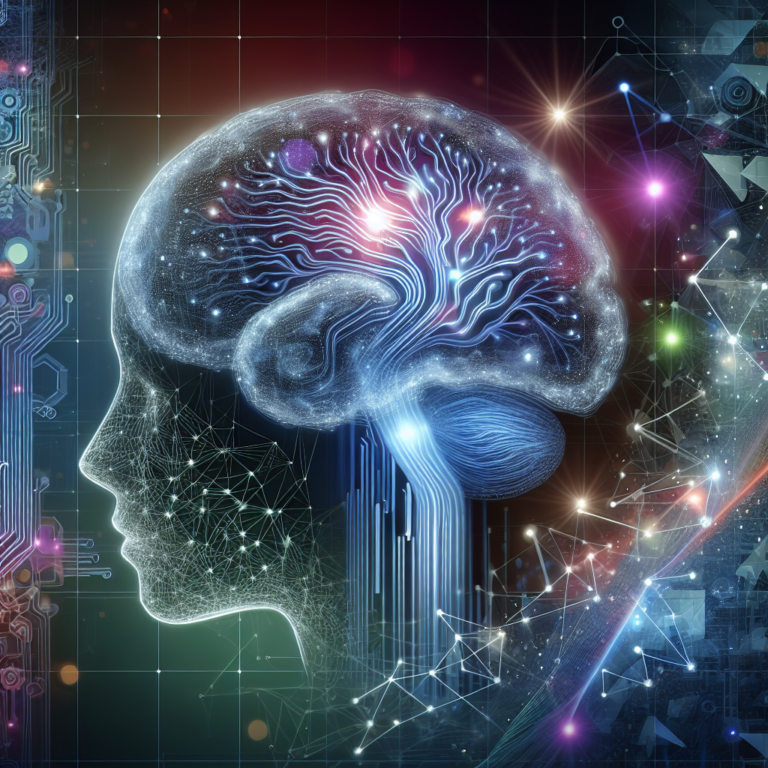Unlocking AI: Understanding Vector Databases to Enhance Communication and Collaboration
In 2014, Google revolutionized machine learning by introducing the self-attention model. This breakthrough allowed artificial intelligence (AI) to understand human language by representing words as mathematical vectors. These vectors are precise numerical representations that capture the connections between ideas, leading to an advanced understanding of context and meaning. Today, as we leverage vector databases, we tap into systems that function similarly to how our brains process and retrieve information. This blend of human cognition and AI technology is fundamentally altering how machines operate and how we engage with them.
Understanding How Our Brains Use Vectors
Consider vectors as GPS coordinates for ideas. Just like a GPS uses numbers to locate places, vector databases utilize mathematical coordinates to map concepts, meanings, and relationships. When you search within a vector database, you’re not just seeking exact matches. Instead, you identify patterns and relationships in a way akin to how your brain accesses memories.
For example, when searching for your misplaced car keys, your brain doesn’t check each room methodically. Instead, it recalls relevant memories based on contextual cues and similarities. This intuitive process mirrors the functionality of vector databases, making them user-friendly and accessible.
Adapting Our Essential Skills for an AI-Driven World
To thrive in this era of AI, we must elevate what I call the three core skills: reading, writing, and querying. While these skills are foundational, their implementation in AI communication requires a significant shift in approach.
- Reading evolves into understanding both human narratives and machine contexts.
- Writing transforms into a structured communication style that machines can easily comprehend.
- Querying—perhaps the most crucial skill—involves mastering navigation within extensive networks of vector-based information, blending human instinct with machine efficiency.
Mastering Effective Communication with Vector Databases
Envision an accountant tackling a complicated financial discrepancy. Traditionally, they would rely on their expertise and meticulously review documents. In today’s AI-driven landscape, they will leverage vector databases as extensions of their analytical skills. When outlining the issue, AI doesn’t simply search for keywords. Instead, it understands the problem’s context and extracts insights from a network of related financial concepts, laws, and previous cases.
The key lies in our ability to communicate effectively with these systems, allowing them to harness both human expertise and AI’s exceptional pattern-recognition abilities. Mastering these evolved skills requires more than just learning new software or rote memorization. It involves understanding how information relates—thinking in vectors, just as our brains naturally do.
When you express an idea to AI, you help it navigate a vast landscape of meanings, rather than just sharing words. The better you grasp these connections, the more effectively you can guide AI toward the insights you require.
Action Steps: Amplifying Your Core Skills for AI Interaction
Are you ready to prepare for an AI-enhanced future? Here are actionable strategies to elevate each of the three core skills:
Strengthening Your Reading Skills
Reading in the AI age requires rapid processing and the ability to synthesize complex materials. Here are some tips to improve:
- Each day, learn two new terms from technical documents or AI research papers, write them down, and practice using them in various contexts. This builds the vocabulary essential for effective communication with AI systems.
- Commit to daily readings of two to three pages of AI-related literature. Focus on technical blogs, research summaries, or industry publications, aiming to develop the ability to extract patterns and relations from complex texts.
- Practice reading documentation from leading AI platforms. This will enhance your understanding of their capabilities and limitations.
Enhancing Your Writing Skills
Writing for AI requires clarity and structured communication. Here are methods to achieve this:
- Deliberately study grammar and syntax. AI language models depend on recognizable patterns, so mastering writing structure will enhance the effectiveness of your prompts.
- Daily, create three new prompts and review them for potential improvements. Notice how even slight modifications in structure and word choice can impact AI responses.
- Include query elements in your writing. Approach writing like a database by clearly specifying the information you seek and how you desire it organized.
Perfecting Your Querying Skills
Querying is arguably the most vital skill for interacting with AI systems. It’s about learning to frame questions effectively, utilizing AI’s remarkable capabilities. Here are ways to enhance this skill:
- Practice formulating search queries on traditional search engines. Start with simple queries and gradually increase complexity to build a strong foundation for AI prompting.
- Become familiar with basic SQL principles and database query structures. Understanding how databases organize and retrieve information encourages a systematic approach to information retrieval.
- Experiment with various query formats in AI tools. Notice how different wordings and structures influence your results, documenting the most effective strategies for different requests.
The Future of Collaboration Between Humans and AI
Both human memory and vector databases excel at compressing complex information into simpler patterns. They also share a hierarchical organization, progressing from specific instances to general concepts. Additionally, both systems are adept at identifying similarities and patterns that aren’t immediately obvious.
This evolution goes beyond mere productivity enhancement; it encourages adapting to a new way of engaging with information and technology. Just as literacy once transformed society, these refined communication skills will be essential for full participation in the AI-driven economy. Unlike previous technological advancements that replaced human capabilities, this transformation focuses on enhancement.
While vector databases and AI systems lack the uniquely human traits of creativity, intuition, and emotional intelligence, the future belongs to those who can communicate and think in vectors. Rather than replacing human thought, this evolution seeks to elevate it.
Successful professionals will expertly blend human creativity with AI’s analytical strength. This journey is not about competing with AI or merely acquiring new tools; it’s about sculpting our inherent communication skills to collaborate effectively with these groundbreaking technologies.
As we enter this new age of human-AI collaboration, our objective should focus on complementing AI capabilities instead of competing against them. The transformation starts with mastering how to convey human insights in the language of vectors and patterns that AI can comprehend. By embracing this shift in communication and information processing, we can build a future where technology enhances rather than detracts from human capabilities, ultimately driving creativity, innovation, and problem-solving to unprecedented levels. 🚀




0 Comments